
HOW FUND MANAGERS FIND THE STARS OF THE FUTURE


HOW FUND MANAGERS FIND THE STARS OF THE FUTURE

Truly global and award-winning, the range is supported by expert portfolio managers, regional research teams and on-the-ground professionals with local connections.
With over 450 investment professionals across the globe, we believe this gives us stronger insights across the markets in which we invest. This is key in helping each trust identify local trends and invest with the conviction needed to generate long-term outperformance.
Fidelity’s range of investment trusts:
•Fidelity Asian Values PLC
•Fidelity China Special Situations PLC
•Fidelity Emerging Markets Limited
•Fidelity European Trust PLC
•Fidelity Japan Trust PLC
•Fidelity Special Values PLC
The value of investments can go down as well as up and you may not get back the amount you invested. Overseas investments are subject to currency fluctuations. The shares in the investment trusts are listed on the London Stock Exchange and their price is affected by supply and demand.
The investment trusts can gain additional exposure to the market, known as gearing, potentially increasing volatility. Investments in emerging markets can more volatile that other more developed markets. Tax treatment depends on individual circumstances and all tax rules may change in the future.
To find out more, scan the QR code, go to fidelity.co.uk/its or speak to your adviser.
Positive news on selling prices fails to lift the mood among housebuilders
Why is Watches of Switzerland buying a media company?
No let-up for Spirax Group as earnings forecasts and the share price drift lower 12 Has the hiring cycle hit bottom for beaten-up recruiter Hays?
America’s biggest bank will set the tone for earning
All eyes on inflation after strong US jobs report
16 Why pawnbroking leader H&T looks poised for a breakout
HarbourVest Global Private Equity has big upside potential
21 Home improvement retailer Kingfisher still has plenty of potential 23 Card Factory correction looks completely overdone 25 COVER STORY Big returns from small-caps How fund managers find the stars of the future
Why managing risk well is the ultimate goal for top investors


sales
If I dip into my SIPP then return to work what would be my tax-free allowance?
Shares, funds, ETFs and investment trusts in this issue





How small-cap stocks can generate big returns
Smaller companies tend to grow faster than larger ones, and with interest rates falling now is exactly the time to look for underresearched and undervalued stocks.
What is the true nature of risk?
Risk is typically associated with reward, but the relationship is far from simple. Plus, why doing what everyone else is doing could be the riskiest strategy.
Did you know that we publish daily news stories on our website as bonus content? These articles do not appear in the magazine so make sure you keep abreast of market activities by visiting our website on a regular basis.
Over the past week we’ve written a variety of news stories online that do not appear in this magazine, including:


Investors need to keep a close eye on directors’ deals, especially sales
When highly-placed insiders are selling shares in their own companies it pays to find out why.



Industry giants need a plan as their traditional activities generate all the cash and profit

Rebased to 100
oth the tobacco and oil and gas industries face a similar quandary right now - they are generating lots of cash from activities which many perceive as being unethical and damaging, but their transitions into other areas are currently not offering anywhere near the same levels of return.
This matters to anyone who has meaningful exposure to the UK market in their portfolio, say through a FTSE 100 tracker, as well as those who invest directly in these sectors. Combined they have a weighting of around 15% in the UK’s flagship index.
For BP (BP.) and Shell (SHEL), both under relatively new leadership in the form of their respective CEOs Murray Auchincloss and Wael Sawan, there has been a clear move to water down commitments to a transition.
Their underperformance compared with their US peers, who have openly dismissed a move into renewables in favour of a continuing focus on oil and gas and complimentary areas like carbon capture, speaks far louder than regulatory and political pressure to accelerate their move out of oil and gas.
BP looks more in need of a plan, with reports suggesting Auchincloss is set to ditch a pledge to reduce oil and gas output by 25% by 2030 (this target had already been reduced from an initial 40% when it was outlined in 2020).

Fine, you can stop doing what the market doesn’t like, but that’s not a strategy in itself.
Shell at least has had a long-term focus on gas which some believe can play an important role as the world weans itself off more polluting fuels like crude oil and coal, and this is reflected in the outperformance of its shares.
In tobacco, Imperial Brands (IMB) posted an encouraging year-end trading update on 8 October which showed strong growth in so-called NGPs (next generation products) like e-cigarettes and vapes.
However, like BP and Shell it is the company’s bread and butter of selling cigarettes which generates all the cash to finance the big dividends and buybacks which are a key attraction for so many investors.
NGPs still account for a relatively modest, albeit growing share of revenue and remain a loss-making activity.
It’s easy to lose sight of the fact, amid the recent doom and gloom around the UK economy and London market, that it has a large number of excellent smaller businesses which often don’t get the attention from the market which they deserve. We’re doing a bit to redress the balance in our main feature this week, drawing on our knowledge and experience to highlight three names and hearing from fund managers about the companies which are getting them excited.
US treasury markets are pricing two quarter percentage point cuts for the rest of the year
It must be a thankless task predicting monthly US jobs data, which probably explains the widening range of forecasts in recent months.
Estimates going into Friday’s (4 Oct) nonfarm payrolls report spanned 60,000 at the bottom end to 220,00 at the top, so September’s 254,000 reading was a genuine upside shock.
Even more surprising was the unemployment level which inched down to within a cat’s whisker of 4% compared with an expected rise to 4.3%.
Meanwhile, average wage inflation also surprised to the upside growing at an annual rate of 4%. While the robustness of the labour market will be comforting to the Federal Reserve, which has expressed some concern in recent weeks, the inflation picture presents more of a challenge for monetary policy.
Investors instantly priced out the odds of another jumbo half a percentage point cut to rates in November. The US dollar rallied around 3% against the euro and sterling while 10 -year US bond yields spiked to 4%, compared with a low of 3.74% at the beginning of October.
Stocks rallied with the S&P 500 adding nearly 1% but it was the small-cap Russell 2000 index which shone, gaining 1.5% to within 10% striking distance of its all-time high achieved two years ago.
That should not come as a surprise as investors increasingly believe the Fed has successfully steered the economy to a soft landing. The latest Bank of America fund manager survey showed four fifths of respondents believe in this scenario.
Sep ’24
Aug ’24
Jul ’24
Jun ’24
May ’24
Apr ’24
Mar ’24
Feb ’24
Jan ’24
Chart: Shares magazine • Source: Bureau of Labor Statistics Note: revised figure where available
Friday’s stronger than expected jobs report gives ammunition to those economists worried about a ‘no-landing’ scenario where the economy continues to expand while inflation remains stubbornly above the Fed’s target.
Talking to Bloomberg’s Surveillance programme, economist Mohamed El-Erian cautioned viewers that inflation ‘is not dead’.

Add China’s latest surprise stimulus package to the mix and suddenly the risks appear more tilted towards inflation than the labour market.
There are other factors which could increase inflationary pressures down the track.
Tensions in the Middle East have sent Brent crude oil prices 15% higher in the last week to almost 80$ per barrel. While the price of Gold slipped after the jobs report, prices remain near record levels after jumping by around a third year to date.
A soft landing is defined as a deceleration of economic activity without the economy entering a recession.
On the domestic front, while the potentially disruptive US port strike has been resolved, workers got a 61% pay hike while unions at General Motors (GM:NYSE) and Boeing (BA:NYSE) are holding out for their own big pay deals. [MG]
The latest house price surveys from Halifax and Nationwide – two of the UK’s largest mortgage lenders – should have investors in developers breaking out the champagne, yet stocks such as Persimmon (PSN) and Taylor Wimpey (TW.) have gone nowhere for the last few weeks while Barratt Redrow (BTRW) shares are hitting three-month lows.
Uncertainty ahead of the autumn budget and over the pace of interest rate cuts may be putting people off buying the housebuilders, but the market is currently the strongest it’s been since before the ‘mini-Budget’ two years ago.
Prices in September increased at their fastest rate since late 2022 with Halifax seeing a 4.7% annual rise in the cost of an average property to just over £293,000 and Nationwide citing a 3.2% annual rise to around £266,000.
‘Market conditions have steadily improved over the summer and into early autumn,’ said Halifax’s head of mortgages Amanda Bryden.
‘Mortgage affordability has been easing thanks to strong wage growth and falling interest rates. This has boosted confidence among potential buyers, with the number of mortgages agreed up

over 40% in the last year and now at their highest level since July 2022.’
Nationwide’s chief economist Robert Gardner added: ‘Income growth has continued to outstrip house price growth in recent months while borrowing costs have edged lower amid expectations that the Bank of England will continue to lower interest rates in the coming quarters.
‘These trends have helped to improve affordability for prospective buyers and underpinned a modest increase in activity and house prices, though both remain subdued by historic standards.’
If investors in housebuilders generally were unenthused, shareholders in Vistry Group (VTY) were probably feeling as if they had gone 10 rounds with Mike Tyson after the stock dropped 30% out of the blue this week on a shock cut to earnings estimates.
The firm blamed a 10% understatement of total life build costs on just nine developments out of its portfolio of 300 sites for a £115 million hit to pretax profit, the bulk of which, £80 million, is set to come off this year’s income.
Vistry said an investigation was ongoing into how the miscalculation happened and insisted it would still deliver over 18,000 new completions this year compared with 16,000 last year, as well as maintaining its share buyback and targeting a net cash position at the end of December. [IC]
Shares in luxury timepiece retailer Watches of Switzerland’s (WOSG) got a modest boost on news it had acquired publishing firm-to-luxury watch platform Hodinkee.
The purchase of a media company by a retailer might look a bit odd at face value. However, the Patek Philippe-to-Audemars Piguet seller clearly believes it can accelerate online growth and grab a greater share of America’s expanding high-end timepiece market.
Described by Watches of Switzerland as a ‘go-to, global destination for luxury watch enthusiasts’, New York City-headquartered Hodinkee offers digital print and video content, not to mention limited edition watch collaborations alongside watch and jewellery insurance services.
As such, it could help its new parent to capture market share across the pond. The deal, the value of which has not been disclosed, looks to have been funded out of existing cash as it is not expected to have any impact on the company’s borrowing pile.
Hodinkee was founded as a watch blog in 2008, but has morphed into an influential editorial and e-commerce site for wristwatches with an engaged audience of 22.2 million annual unique visitors to its website and over one million social media followers.
Once the deal completes, Watches of Switzerland will integrate Hodinkee’s existing commercial activities with its in-house US e-commerce site, giving the FTSE 250 firm access to a captive and engaged luxury watch audience. It will also tie-in Hodinkee’s insurance activities to its existing partnership with Chubb (CB:NYSE)
Switzerland said it believed the market for high-end timepieces and jewellery has bottomed out in the UK and confirmed it is on track to deliver its full year 2025 guidance.
Shore Capital analyst Clive Black sees the Hodinkee deal as ‘a sensible bolt-on move adding to the group’s capabilities as it focuses down on the UK and US markets. Watches of Switzerland had a quite torrid 2023/2024 and central to a recovery in its rating is meeting forecasts on an ongoing basis, noting continued investment in the portfolio of stores and the Coin and now Hodinkee acquisitions.’

Watches of Switzerland was at pains to point out Hodinkee will retain its editorial independence and the platform’s founder Ben Clymer will return to lead its operations after stepping down as CEO in December 2020.
In a trading update on 3 September, Watches of
Black adds: ‘Comparatives are now more favourable, which may yet be the springboard to a better financial performance and stock price, the key to delivery being the prospect of sequential annual earnings progress.’
The development shows how retailers are having to be more creative and innovative in the way they reach customers, with tailored content helping to push people into purchasing decisions. [JC]
The stock has gained 50% year-to-date after separation of three businesses
Shares in specialist software and consultancy outfit FD Technologies (FDP:AIM) have already surged in 2024 and got a further boost on confirmation of the sale of its First Derivative business to US software giant EPAM Systems (EPAM:NYSE) for £230 million.
Proceeds of the sale will be used to repay £20 million net debt, the company said, and excess cash will be returned to shareholders.
analytics software business which Investec sees as a ‘key beneficiary of generative AI’.

The divestment will also allow FD Technologies to focus on KX, its AI (artificial intelligence) driven
‘The kdb+ product is arguably the leading worldwide vector database, but proprietary language and original on-premise characteristic have historically been barriers to adoption. With these addressed in recent years, generative AI could be the killer app,’ Investec observes.
The company’s shares have built momentum since a strategic review in March when the board separated the firm’s three businesses – KX,
Chart: Shares magazine • Source: LSEG
First Derivatives and marketing tech arm MRP.
‘We view today’s news (7 October) as incrementally positive both in terms of trading performance and the separation of KX and First Derivative, allowing the share price to build on recent performance,’ noted analysts at Shore Capital. [SG]
Former ‘growth champion’ finds itself unloved and in the doldrums
Shares in Cheltenham-based thermal energy management and fluid technology firm Spirax Group (SPX) hit a five-year low this week, trading even below the level they reached

at the peak of the pandemic sell-off, after its latest capital markets event failed to spark enthusiasm.
The FTSE 100 group, whose shares are down 33% this year, making them one of the worst performers in the index, is guiding for mid-singledigit organic sales growth this year with no change in its operating margin but has hinted at headwinds to its targets due to the strength of sterling.
Once a market darling which not that long ago commanded a PE (price to earnings) multiple of 55 times, Spirax finds itself with few friends among the analyst or investor community despite the undoubted high quality and attractive margins of its businesses.
In the last three months, 2024 EPS
Chart: Shares magazine • Source: LSEG
(earnings per share) estimates have been cut by 26p or 8% and 2025 estimates by 39p or around 11% according to Stockopedia, while several analysts have also cut their price targets for the stock. [IC]

14 Oct: 1Spatial
15 Oct: Bytes Technology
16 Oct: Sanderson Design, Vertu Motors Whitbread FULL-YEAR RESULTS
14 Oct: Ensilica, Kromek
15 Oct: Bellway, Seraphim Space Investment Trust, Yougov
16 Oct: ASOS
TRADING ANNOUNCEMENTS
11 Oct: Hays
14 Oct: Alphawave, Ashmore, Atalya Mining
15 Oct: Reach, Rio Tinto, Victorian Plumbing
16 Oct: Antofagasta
17 Oct: Centamin, Dunelm, Mondi, Rentokil, St Jame's Place

For the last four quarters the group has posted a fall in fee income
City-based headhunter Hays (HAS) has had a rough time over the last 12 months, posting four consecutive quarters of negative growth in fee income.
Worse still, the rate of decline actually accelerated over that period to stand at minus 17% at the end of June.
Therefore, investors and analysts will be looking for less-bad news when the company updates the market on its first-quarter performance (July to September) on 15 October.
While the UK represents just a small proportion of the firm’s business, there will naturally be a focus on what the firm says about current hiring trends in both the permanent and temporary markets.
According to official figures, job vacancies shrank 14% year-on-year in August to 857,000 while the number of applicants for each role is rising meaning companies can afford to be more choosy.
With few levers to pull to control costs, the firm inevitably ends up laying off staff it has spent time and money
training up – in the year to June it cut its headcount by 7,300 people – so if there are signs of stabilisation in its own staffing levels it could be a sign Hays sees the market improving. The other thing analysts will be looking for is some kind of financial guidance for the year to next June, as so far chief executive Dirk Hahn has declined to give any hints as to whether their forecasts are anywhere near the mark.
As of last week, the companycompiled consensus was for net fee income of just over £1 billion, operating profit of £98 million and earnings per share of 3.9p. [IC]
Chief executive Jamie Dimon has talked down revenue expectations
Tomorrow (11 October) sees the release of third-quarter earnings from JPMorgan Chase (JPM:NYSE), America’s biggest bank by market cap and the 12th-largest company in the S&P 500 index.
With a market value of $445 billion and annual revenue of around $130 billion, which includes investment banking, corporate lending, retail banking and credit cards, the firm has become a bellwether for the US economy.
While second-quarter earnings beat forecasts, chief executive Jamie Dimon was quick to dial down expectations for top-line growth going forward now the Federal Reserve has begun cutting interest rates, suggesting analysts’ forecasts for the year-end were too high.
Dimon also cautioned about ‘tail risks’ to the market and the economy such as geopolitics, sticky inflation, large fiscal deficits, the restructuring of trade post-Covid and the increasing militarisation of foreign nations.
However, the bigger risk to JPMorgan shareholders is the question of succession after Dimon said earlier this year his timeline for
stepping down was no longer five years.
Analysts believe there is a ‘Jamie premium’ of 10% to 15% which could be wiped out when Wall Street’s longest-serving chief executive decides to hang up his boots.
Dimon has run JPMorgan for 18 years, a period which includes the financial crisis, and is one of the most influential figures in corporate America.
The 68-year-old is seen as a key force behind the bank's record profits, market share gains and performance which consistently beats rivals.
Dimon told investors at a conference this month ‘We'll do the right thing’, according to a report by Reuters, before adding: ‘It's the last and most important thing I'll ever deal with, and we all want to get that exactly right.’[IC]

11 Oct: Bank of NY Mellon, Fastenal, JP Morgan, Wells Fargo
14 Oct: Charles Schwab
15 Oct: Bank of America, BlackRock, Citigroup, Goldman Sachs, J&J, Omnicom, PNC Financial, State Street, United Airlines, UnitedHealth, Walgreens Boots
16 Oct: Abbott Labs, CSX, Discover, Elevance Health, Equifax, Lam Research, Morgan Stanley, PPG Industries, Prologis, Steel Dynamics, US Bancorp
17 Oct: Netflix, Blackstone, Intuitive Surgical, Marh McLennan
US 10-year bond yields have spiked back above 4%
September’s surprisingly strong US non-farm payrolls numbers (4 October) have cast a long shadow over markets and potentially changed the landscape for investors going forward.
The economy generated 254,000 new jobs, above the top end of forecasts, accompanied by unemployment falling to 4.1 % and average wage increases which hit 4% on an annualised basis.
Investors slashed bets on another jumbo half a percentage point rate cut in November as well as implying a small chance the Federal Reserve does nothing.
Incoming data continues to be volatile so it would be unwise to place too much weight on a single month’s reading. That said, CPI (consumer
price index) reading (10 October) takes on more importance as investors switch attention towards the risks from stickier inflation.

The headline and core month-on-month readings are expected to slow to 0.05% and 0.24% from 0.19% and 0.28% respectively. If they prove accurate, it would slow year-on-year core inflation marginally to 3.2% from 3.3%.
US producer price inflation data for September (11 October) is also expected to cool slightly to 0.1% from 0.2% month-on-month while the core reading is forecast to drop to 0.2% from 0.3%.
A reigniting of inflationary pressures would likely see bond yields rise further and give the Fed pause for thought on its ‘recalibration’ of monetary policy.
The end of the week (12 October) sees the University of Michigan consumer sentiment index reading for October with economists expecting a slight uptick to 70.5.
The 15 October sees the release of UK hourly earnings and unemployment data for August while we also get a raft of European inflation data for September.
The following day sees the release of September inflation data from the UK, which will be closely watched given recent comments by Bank of England governor Andrew Bailey suggesting good news on that front could allow faster rate cuts. [MG]
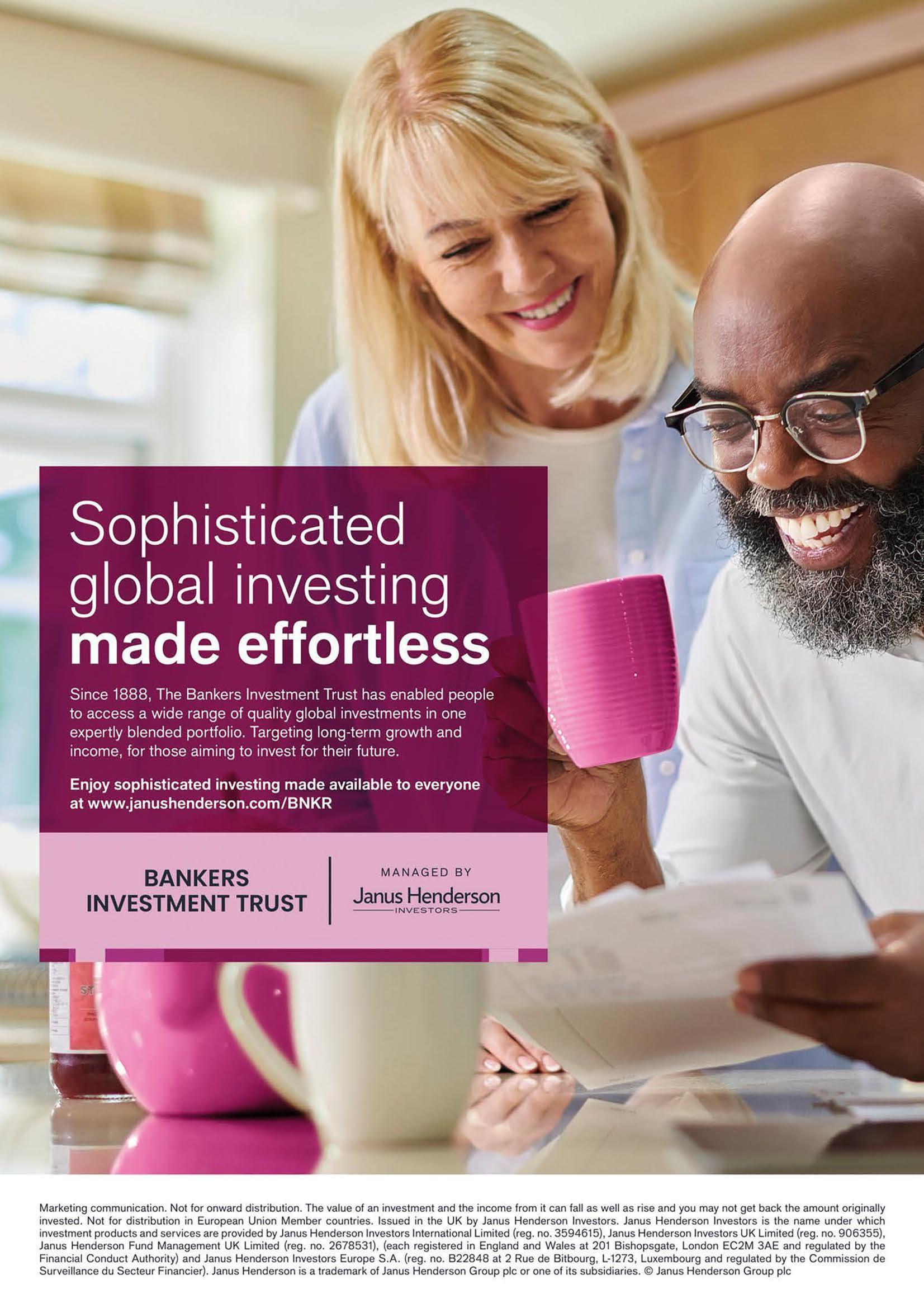
The economic backdrop remains favourable for this pawnbroker-tojeweller offering defensive growth and income
(HAT:AIM) 376.7p
Market cap: £165.7 million
A15% year-to-date drawdown at H&T (HAT:AIM) presents a buying opportunity at the UK’s biggest pawnbroker, a beneficiary of the costof-living crisis and the elevated gold price whose long-run prospects appear underrated on a singledigit PE (price to earnings) ratio.
Caused by inflation and rising interest rates, the cost-of-living crisis has turbo-charged growth in H&T’s core pawnbroking business in an exceptional last two years, sending the shares close to 500p by late 2022.
Yet a rise in consumer confidence has been choked off by new prime minister Keir Starmer and chancellor Rachel Reeves, who look set to take ‘painful’ decisions in the upcoming Budget, which suggests this cost-of-living tailwind could persist for a while longer yet, with H&T also poised to profit from constrained supply of credit elsewhere in the non-prime lending sector.
The AIM-quoted firm has multiple levers for long-term growth including significant store base expansion, and looks well-placed to deliver steady earnings progression and dividend increases in the years ahead.
Offering an attractive 5% dividend yield, H&T looks too cheap to us on a rough 10% discount to its latest reported net asset value (NAV) per share of 416p.
Britain’s largest pawnbroker is also the sixth-largest retailer of quality, pre-owned and new jewellery and watches, operating from 281 stores across the UK at last count. Led by chief executive Chris

Gillespie, the £165.7 million cap continues to see strong demand for its pawnbroking services as the availability of short-term, small-sum credit for non-prime consumers from regulated lenders has reduced significantly in the past decade due to credit quality, regulatory and financing pressures.
Despite having grown its pledge book by over 230% between 2015 and 2023, Canaccord Genuity estimates H&T’s share of its total addressable market remains tiny, less than 1% in fact, implying there’s a long growth runway ahead.
Small business owners, who may be excluded by mainstream financial institutions, provide an adjacent, growing lending market for H&T to target.
H&T has exciting organic and acquisitive growth potential in this fragmented pawnbroking market. As of 30 June 2024, the company had 281 stores in the UK, 55% more than its nearest direct competitor, and Gillespie has indicated the optimum UK store estate sits between 325 and 350, which implies a 16% to 25% increase in the size of the store estate.

The company also sells pre-owned jewellery, new jewellery and watches in store and online, and offers other services which act as a driver of store footfall. For instance, management is investing in growing H&T’s foreign currency business, which is building momentum and taking market share, and the company also offers cheque cashing and international money-transfer services in its stores.
Another potential upside catalyst for forecasts is any further rise in the gold price, perhaps driven by geopolitical tensions, which would further improve margins in H&T’s gold purchasing and pawnbroking scrap business.
Conversely, a sharp decline in the price of the yellow metal could negatively impact demand for gold purchasing, gold purchasing margins and scrap margins.
Results for the half ended 30 June (reported on 20 August) revealed a solid 12.5% year-on-year increase in adjusted pre-tax profit to £9.9 million. This was below what the market was expecting due to a seasonal increase in pawnbroking redemptions in the Spring, as customers chose to repay loans early, prompting analysts to downgrade their earnings estimates.
These redemptions have subsequently normalised, and H&T’s pledge book is growing organically once again. Elsewhere, the retail business had a strong half, with revenue rising 27% to £29.3 million driven by bumper demand for watches in particular, and it is all to play for in jewellery and watches over the seasonally-important Christmas selling period. H&T’s board displayed its confidence in the group’s future prospects by hiking the halftime payout 7.7% to 7p.
In our view the company is well-positioned to build on the strong profit growth delivered since the pandemic.
While H&T had almost £50 million of net debt at the last count, the asset-backed balance sheet remains strong and the company operates well within its banking covenants.
For the year to December 2024, the broker forecasts an uplift in pre-tax profit from £26.4 million to £29 million, rising to £32.2 million in full-year 2025, while the shareholder reward is estimated to increase from 17p to 18p this year ahead of 19p next year. [JC]
The FTSE 250 trust is trading at an exceptionally cheap 40% discount
Equity (HVPE) £23.10
Market cap: £1.75 billion
The markets haven’t been kind to private equity and other ‘long-duration’ investments over the last couple of years as high interest rates hammered their valuations, but with the global rate cycle now turning we believe money is poised to flow back into these assets.
HarbourVest Global Private Equity (HVPE) is a $4.3 billion portfolio of investments in more than 1,000 private companies which has generated a 268% total share price return over the decade to the end of July.
That represents an average outperformance of just under 4% per year against the FTSE All World Total Return Index, which as the managers say goes to show not only is private equity a good way to diversify your portfolio but if you pick the right fund it can even beat public markets.
Rather than putting money directly into 1,000 businesses, the trust invests in funds run by its
investment manager HarbourVest Partners to create a broad portfolio with roughly the same geographic exposure as the FTSE World index, in other words around 60% in North America, 20% to 25% in Europe and the rest in the Asia-Pacific region.
In terms of style or stage of development, the portfolio is invested 60% in buyout funds, 30% in venture and growth equity and 10% in incomegenerating finance, infrastructure and real assets.
By sector, the biggest allocation by far is to technology and software at 33%, followed by between 10% and 14% each in consumer, healthcare, financial, industrial and business service companies, with the rest split between media/telecoms and energy including ‘cleantech’.
Within the venture and growth equity part of the portfolio, 80% of investments are in cloud computing, AI (artificial intelligence) including machine learning and SaaS (software as a service), so the trust offers the opportunity for retail investors to gain ‘inside’ access to privately-owned business at the very forefront of development.
As we have already touched on, over 10 years the trust has beaten public markets as measured by the FTSE All-World Total Return Index by almost 4% per year, but as we also alluded to the last couple of years haven’t been kind to private equity as an asset class.
To our mind, the underperformance of the shares over the last few years – not only against the
9/20199/2020 9/20209/2021 9/20219/2022 9/20229/2023 9/20239/2024
9/20199/2020 9/20209/2021 9/20219/2022 9/20229/2023 9/20239/2024
Shares magazine • Source: HVPE
market but also compared with the NAV (net asset value) – has created an ideal opportunity to buy into a trust with high-quality assets at an unusuallylarge 40% discount.
Managing director Richard Hickman describes the trust’s performance so far this year as ‘resilient’, which belies a sense of frustration that the market hasn’t credited the fund with the hard work which has gone on behind the scenes, including securing an increased credit facility at very competitive terms to give the team greater flexibility in their capital allocation.
Valuations have held steady so far this year for US private equity at around 12.2 times EV/EBITDA (enterprise value to earnings before interest, tax, depreciation and amortisation), which is the most commonly-used yardstick.
However, the S&P 500 index has rallied 20% to an all-time high of 5,762 points meaning public market valuations have jumped from around 14 times last year to nearer 17 times today, so the gap between public and private values has widened to
Chart: Shares magazine • Source: HVPE
nearly 40% against 15% just a year ago.
Meanwhile, activity is picking up in terms of asset sales or ‘realisations’, not just at the fund but across the private equity industry where it is reckoned the amount of ‘dry powder’ or money looking for acquisitions is at an all-time high of $1,600 billion.
Therefore, there are several factors which could drive a re-rating of the shares: an increase in valuations, an increase in realisations driven by more deals, or a narrowing of the discount to NAV as a result of either of these factors, together with a fall in the discount rate as central banks continue the easing cycle.
Among the fund’s largest holdings are Chinese fast-fashion retailer Shein, US oil and gas producer CrownRock LP (currently in the process of being acquired by US major Occidental (OXY:NYSE)), Dutch discount retailer Action – which will be wellknown to investors in 3i (III), where it makes up the majority of the firm’s NAV – and UK insurance broker Howden Group. [IC]
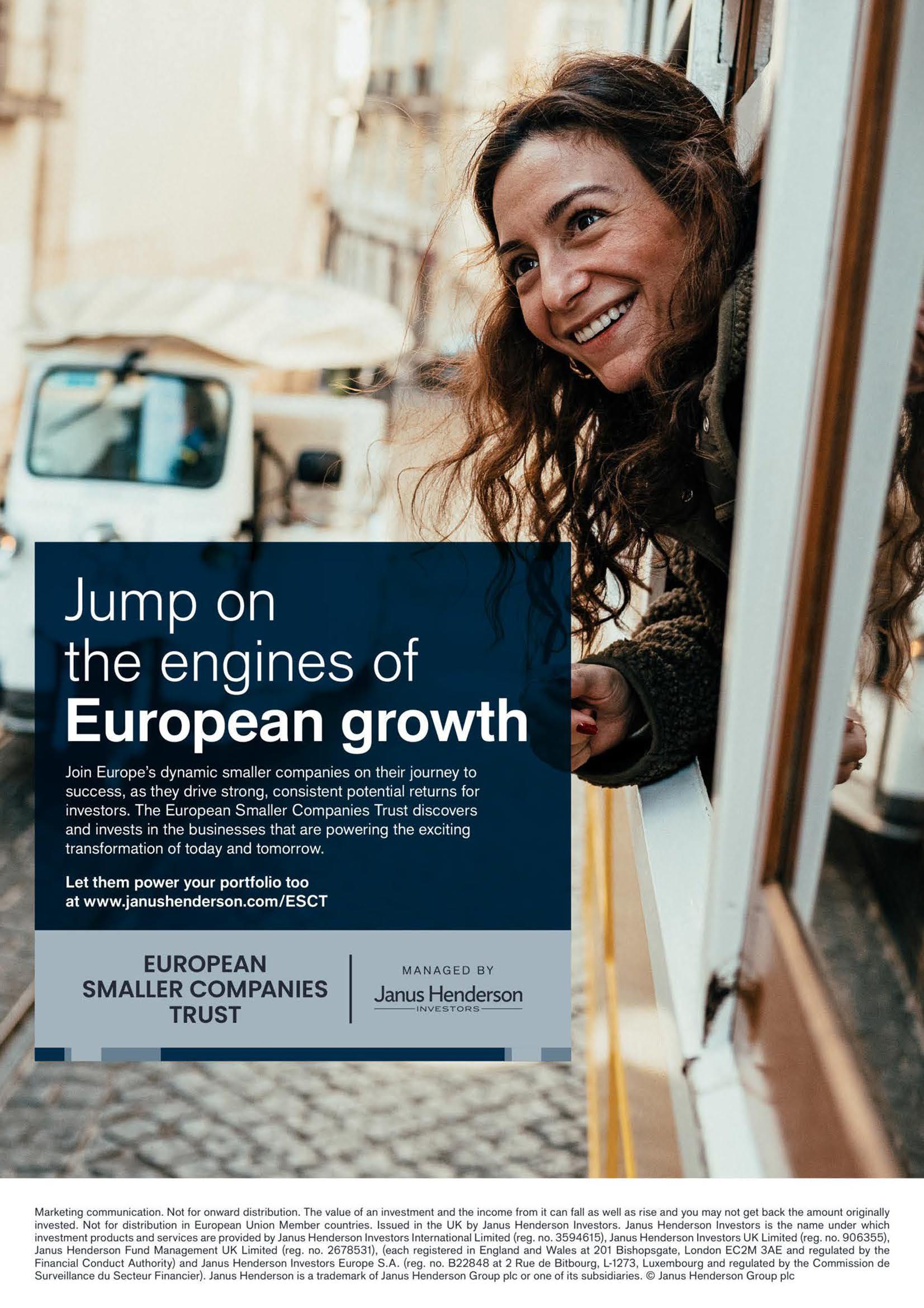
DIY group has raised guidance once this year and we are hopeful of more
We recommended buying into home improvement retailer Kingfisher (KGF) back in February at 223.5p on the basis of valuation (a single-digit price to earnings multiple and 5.5% dividend yield) and the potential for gains on the back of self-help measures and improving UK consumer confidence as interest rates come down.
Although Kingfisher shares are just off their recent 12-month highs, we believe there is scope for further re-rating as the firm’s European businesses stabilise.
WHAT HAS HAPPENED SINCE WE SAID BUY?
In its first-quarter trading update in May, the company posted a small increase in like-for-like sales as market share gains for B&Q and Screwfix

in the UK and an improving trend in Poland offset expected weakness in France, leading the board to reiterate its full-year guidance for pre-tax profit and free cash flow.
In September, the group released first-half results which showed sales down slightly in the UK, Ireland and Poland due to poor weather, and continued softness in the French market, but broadly it still managed to gain share.
Notably, online sales showed a marked increase and strong management of the gross margin (meaning fewer promotions) together with cost and inventory control meant the firm was able to raise its pre-tax profit and free cash flow outlook for the full year.
WHAT SHOULD INVESTORS DO NOW?
With positive signs of a housing market recovery in the UK, we believe Kingfisher is well-positioned for growth this year and next year and once sales in France stabilise we should see a further improvement in earnings and cashflow.
Based on the consensus estimate of 25p of EPS (earnings per share) for the year to January 2026 and our belief the shares can get back to a multiple of 15 times, we get a target price of 375p meaning there is still plenty of headroom left. [IC]
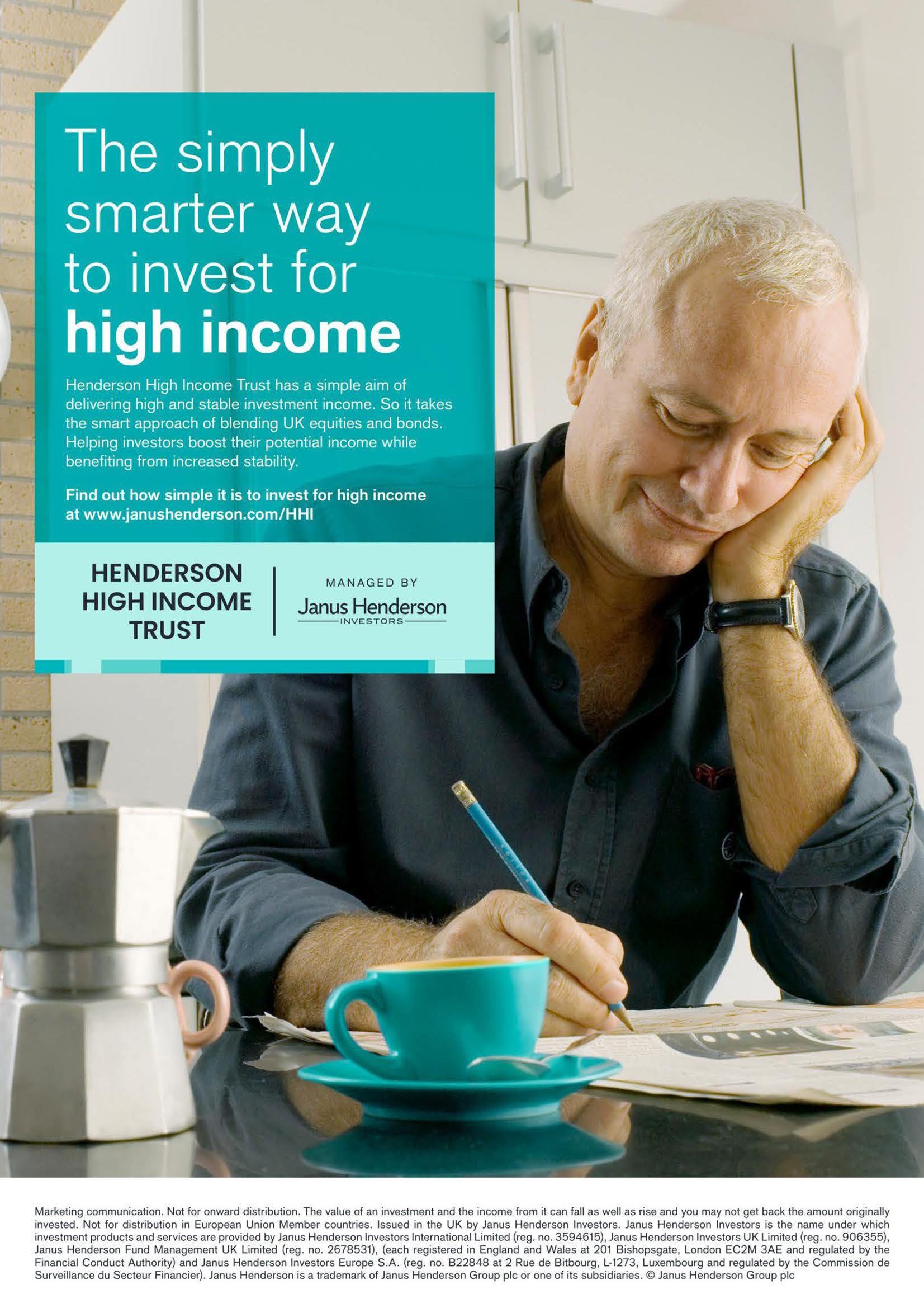
We are sticking with the value-focused card and calendar seller despite share price slide
Loss to date: 3.3%
We urged readers to buy Card Factory (CARD) at 98.9p on 11 July on the grounds the cash-generative retailer’s growth prospects were underappreciated and its low valuation suggested significant re-rating scope.
Shares also highlighted the value-focused greetings card-to-gift seller’s modest share of a large TAM (total addressable market) and its capacity for returning cash to shareholders through dividends, as well as undertaking growth-enhancing acquisitions having reduced its debt levels.
WHAT HAS HAPPENED SINCE WE SAID BUY?
The shares have basically round-tripped to leave our call 3.3% in the red. Stunning early gains arose on no news flow, with the stock peaking at 143p on 23 September for a 45% gain

on paper, before plunging on mixed first-half results (24 September).
Adjusted pre-tax profit slumped the best part of 35% to £14.5 million in the six months ended 31 July 2024, which Card Factory blamed on operating cost inflation and the ‘phasing of strategic investments’, and full year profits will be second half weighted, meaning much hinges on the important Christmas season.
Investors who failed to book profits on the way up should average down and buy more stock. Chief executive Darcy Willson-Rymer’s growth strategy has clear momentum with all channels in growth in the first half, demonstrating that demand for Card Factory’s value offering of gifts, balloons, cards and party supplies remains robust.
The sell-off looks overly hash considering the company left its full-year 2025 guidance unchanged and declared an interim dividend for the first time in five years, suggesting confidence in the outlook.
Strategic progress in the Partnerships division excites too, with Card Factory expanding its partnership with Aldi to cover the whole of its UK and Irish estate, effectively doubling the revenue opportunity, and having secured a US market entry through a wholesale partnership with an as-yetunnamed retailer which will begin trading ahead of Christmas.
Card Factory continues to look too cheap on a single-digit forward multiple of earnings. [JC]


Over the long haul, small-caps have historically outperformed large caps, fuelling the research highlighting the so-called ‘small-cap effect’ – the idea that smaller companies offer higher risk-adjusted returns than larger ones. Unfortunately, the higher interest rate environment of recent years has proved tough for the stock market’s small fry, who’ve spent more than a decade lagging more sizeable corporate siblings.
But with a central bank interest rate cutting cycle underway, the prospects for small-caps looks promising as lower borrowing costs should provide a tailwind for growth-oriented portfolios.
As Deutsche Numis pointed out in a 17 September note, ‘valuations remain relatively cheap despite superior earnings growth prospects.
‘This creates a compelling backdrop to invest in small-caps, particularly given the potential for a broadening of market returns away from the US mega cap tech stocks.’
Dan Suzuki, deputy chief investment officer at Richard Bernstein Advisors, believes since investors have been stuffing huge sums of cash into Big Tech stocks across the pond, attractive investment opportunities have been
created elsewhere with US small-caps looking especially compelling.
Deutsche Numis also noted that while smallcaps have rallied off recent low valuations, ‘they continue to offer value with global small-caps trading on an historic PE ratio of 17.7 times, a 19% discount to the MSCI AC World. In the UK, smallcaps trade on a circa 6% discount to UK large caps, and a 15% discount to global small-caps, which we believe offers value and should continue to fuel mergers and acquisitions activity’.
Nish Patel manages The Global Smaller Companies Trust (GSCT), a diversified portfolio offering a simple way to access growth companies around the world.
Patel says: ‘Smaller companies benefit more than larger companies when interest rates are cut because they generally have lower access to capital and are more exposed to floating rate debt. As interest rates fall and credit conditions loosen, these smaller companies benefit disproportionately.’
He also observes that falling UK interest rates have historically helped consumer spending. ‘A more favourable back drop for UK consumers
will benefit smaller companies more than larger companies given that they derive more of their revenues from the domestic economy.’
Among UK small cap investors, Strategic Equity Capital’s (SEC) manager Ken Wotton believes post-election optimism has given way to prebudget anxiety over concerns adverse tax changes could damage market prospects. Yet Wotton takes a more ‘glass half full’ view. ‘Politically the UK
has flipped from a post-Brexit pariah to a relative safe haven amongst developed markets,’ he explains. ‘Recovering economic growth, reducing inflation and falling rates provide a long-awaited supportive backdrop for UK smaller companies. Global equity investors may soon follow the lead of global private equity funds in seeing the UK as a relative safe haven with high-quality companies trading at bargain prices.’
Data as of 2 October 2024
Table: Shares magazine
• Source: The AIC
Richard Staveley manages value-focused small cap trust Rockwood Strategic (RKW), whose stellar 266.5% ten-year share price total return has left it as just one of three UK Smaller Companies trusts trading at a premium to net asset value (NAV).
‘As Ed Chancellor describes in his brilliant book “The Price of Time”, interest rates reflect exactly that,’ remarks Staveley. ‘As such, for smaller companies, whose quantum and rate of future growth in profitability is generally much larger than maturer large companies, the factor of time influences their valuations. Falling interest rates or low interest rates therefore tend to lead to higher valuations for perceived “growth assets”, such as small companies, as the price of time is less.
‘However, if interest rates are being cut

aggressively to tackle perceived incoming weaknesses in the economy, as small companies tend to be more fragile, less diversified and when compared to larger companies, respond more poorly to recessionary conditions, they tend to then underperform.’
Staveley believes the ‘goldilocks’ scenario for UK small-caps would be ‘a measured and incremental run of interest rates cuts to a level near the neutral rate, ideally at a stimulative setting.’ He highlights Facilities by ADF (ADF:AIM), a fast-growing UK company exposed to the film and TV industry, as a recent Rockwood Strategic pick poised to benefit from falling rates.
Also weighing in is William Tamworth, comanager of Artemis UK Smaller Companies Fund (B2PLJL5), who is starting to see early signs of green shoots if not yet a full recovery in sentiment. ‘Confidence encourages consumers to spend and investors to invest and the budget could trigger a quick mood shift,’ says Tamworth. ‘Once it is out of the way the government rhetoric might switch from “we have inherited an unimaginable mess” to “look what a good job we are doing fixing it”. Further interest rate cuts could help, too, and given investors’ negative positioning and consumers’ high rate of saving, we could see a sharp bounce back in consumer spending and in UK small-caps.’
One of the managers of WS Amati UK Listed Smaller Companies (B2NG4R3), David Stevenson, stresses that a mere 4.4% of UK pension assets are held in domestic equities.
‘It’s likely that most, if not all, UK pension assets are represented by large, blue-chip stocks, which tend to have significant overseas operations,’ he informs Shares. ‘A shift in government policy to encourage allocation to UK small-caps would not only offer far more direct support to the UK economy, but would be a great investment strategy for the pension funds to pursue. Everyone knows how relatively cheap the UK stock market is - clearly evidenced by the frenetic activity seen around share buybacks and company bids.’
Small-caps Strategic Equity Capital’s Wotton has been buying include the recovering wealth manager, Brooks Macdonald (BRK:AIM), ‘which
While riskier than large caps, investment sage Jim Slater once said ‘elephants don’t gallop’, meaning small companies have the capacity to grow much faster than big ones. For example, it is far easier for a £50 million market cap to get to a £200 million valuation than it is for a £50 billion company to quadruple in size. Along with the capacity for growth there are several positives which come with investing in small cap companies.
A streamlined management structure enables
trades below half the rating of private peers’, as well as consultant Costain (COST), ‘benefiting from a tailwind in infrastructure spending’ and also Iomart (IOM:AIM), the IT managed service provider ‘poised to gain from AI-driven demand for cloud computing capability’.
Artemis’ Tamworth says the fund is overweight consumer stocks like online greetings cards leader Moonpig (MOON), admittedly a FTSE 250 constituent, but also small-cap sofa seller DFS Furniture (DFS) and AIM-listed package holidays play Jet2 (JET2:AIM). ‘It is not so much a macro call that we are making here, it is more that we can buy these companies on very depressed valuations because of the years of negative sentiment around the cost-of-living crisis and impending recessions,’ says Tamworth. ‘Should this sentiment change, we see scope for a significant re-rating.’
James Henderson, co-manager of investment trusts Henderson Opportunities Trust (HOT), Lowland (LWI) and Law Debenture (LWDB), notes consumers have been paying down debt, curtailing spending plans and putting off home improvements and small-scale building projects. But if rates come down, the freeze should thaw and small-caps should be a beneficiary.
One name he favours is UPVC window and door manufacturer Epwin (EPWN:AIM), which has reduced its cost base, focused on efficiency and should see operating margins improve once demand picks up. ‘Weaker competitors have retreated as consumers have cut back on their spending but there is a replacement cycle which means spend cannot always be deferred,’ says Henderson, while stressing Epwin has a growing dividend and currently yields a juicy 4.5%.
most small-caps to respond quickly to business opportunities and a niche focus can allow them to grab market share even when the size of the overall market is shrinking.
Many small cap companies have a strong innovative streak in contrast to their larger, more entrenched counterparts. Because many smallcaps will fly under the radar of big institutional investors and are generally less well researched, there are probably more of these opportunities in this part of the market.

After taking over Belvoir Group and GPEA earlier this year, the Property Franchise Group (TPFG:AIM) is the largest multi-brand property franchisor in the UK with revenue in the first half to June more than doubling compared with last year.
The group now manages more than 150,000 rental properties through a network of 1,900 franchisees and licensees together with 300 mortgage advisors.
Chief executive Gareth Samples told Shares recently trading was ‘at least in line with market expectations’ for the full year and the firm raised its interim dividend by 30%.
The lettings market saw strong demand in the first half, and the forecast is for more of the same in the second half with above-inflation rent rises continuing into 2025.
Meanwhile, despite slower-than-expected activity at a national level, the group has seen underlying growth in sales and in financial services in the first half.
So far this year, agreed sales have increased by two thirds to a record £47.5 million in value, and underlying growth is expected to accelerate in the second half given the increase in listings on the major property portals.
Samples cites the sharp drop in mortgage
rates since August – with NatWest (NWG) now offering a five-year fixed deal at 3.7% compared with 6% this time last year, for example – as being a major driver of fee income over the rest of this year.
Commissions from financial services such as mortgages and remortgages jumped more than seven-fold to £7.7 million in the first half and now represent a meaningful part of the business. [IC]

non-recoverable engineering work is being undertaken for customers and Concurrent can support the integration of its products with these broader systems.
Colchester-headquartered Concurrent (CNC:AIM) is a developer and manufacturer of high-performance embedded computer products.
This includes so-called ‘single-board computers’ – a complete computer built on a single circuit board.
Concurrent provides this and other tech hardware for sectors like defence, aerospace and telecommunications as well as industrial settings where products need to be rugged enough withstand extreme temperatures, shock, vibration and other stresses. Defence dominates, accounting for 82% of revenue in the six months to 30 June 2024.
As well as supplying the kit, Concurrent provides support services to help integrate and manage these components and systems. The company has been quietly eking out impressive growth, bar in 2022 which was marred by supply chain issues.
Forecasts from broker Cavendish imply a compound annual growth rate of 10.9% in earnings per share from 2023 to 2027 – with the company transitioning from simply supplying components to providing a more bespoke offering.
Analyst Ian McInally says: ’There has also been a marked move towards modifying custom products for customers to provide tailored solutions, particularly so they can be integrated as part of whole systems. Increasing levels of
‘Working with partners, especially providing the modified products to make up these whole systems solutions, is a crucial part of the business strategy. Management believes it has identified a crucial competitive advantage in the market, given the time and level of support systems integration it can provide compared with larger competitors.’
The company pays a dividend, albeit a modest one, and Cavendish forecasts it will be sitting on net cash of £14 million by the end of this year. Robust cash generation will enable further organic investment and offers scope for M&A. Given the growth potential a 2025 priceto-earnings ratio of 18.4 times doesn’t seem unreasonable. [TS]

Not only does SDI’s growth stretch back multiple years, it has been high-quality growth. Gross margins typically run at around 60% to 65%, high for a manufacturing business, while returns on investment and operating margins are in the double-digits and above industry averages.
A casual glance at the share price chart might put a quick end to investors’ research into SDI (SDI:AIM), but that’s a mistake, in our view. This is a small cap company which has stuck to its largely successful knitting for years, and we expect its fortunes to significantly improve over time.
SDI is a collection of subsidiaries involved in the design and manufacture digital imaging, sensing and control equipment used in life sciences, healthcare, astronomy, manufacturing, precision optics and art conservation applications. It’s a buy and build model which closely resembles that of health, safety and environmental kit maker Halma (HLMA), a constituent of the FTSE 100, buying good value businesses which add consistent cash flow and profits to the overall company.
The end of the pandemic has tossed many a challenge at SDI as customers de-stocked after a prolonged spell of over-ordering. Higher borrowing costs haven’t helped either, but both issues now seem set to improve. This leaves substantial upside on the table, partly as SDI continues to find attractively priced acquisition targets to supplement organic growth, and from a change in market mood.
This is a stock which has previously traded on a 20-plus PE (price to earnings), now just 12. History is on its side, we believe. Over the last 10 years, SDI has grown turnover from £7 million to £65.8 million in the year to 30 April 2024 and adjusted operating profit from around £57,000 to £9.6 million. The share price has increased from around 10p to over 200p at its peak, yet today is available at 50p. Not for long, we suspect. [SF]
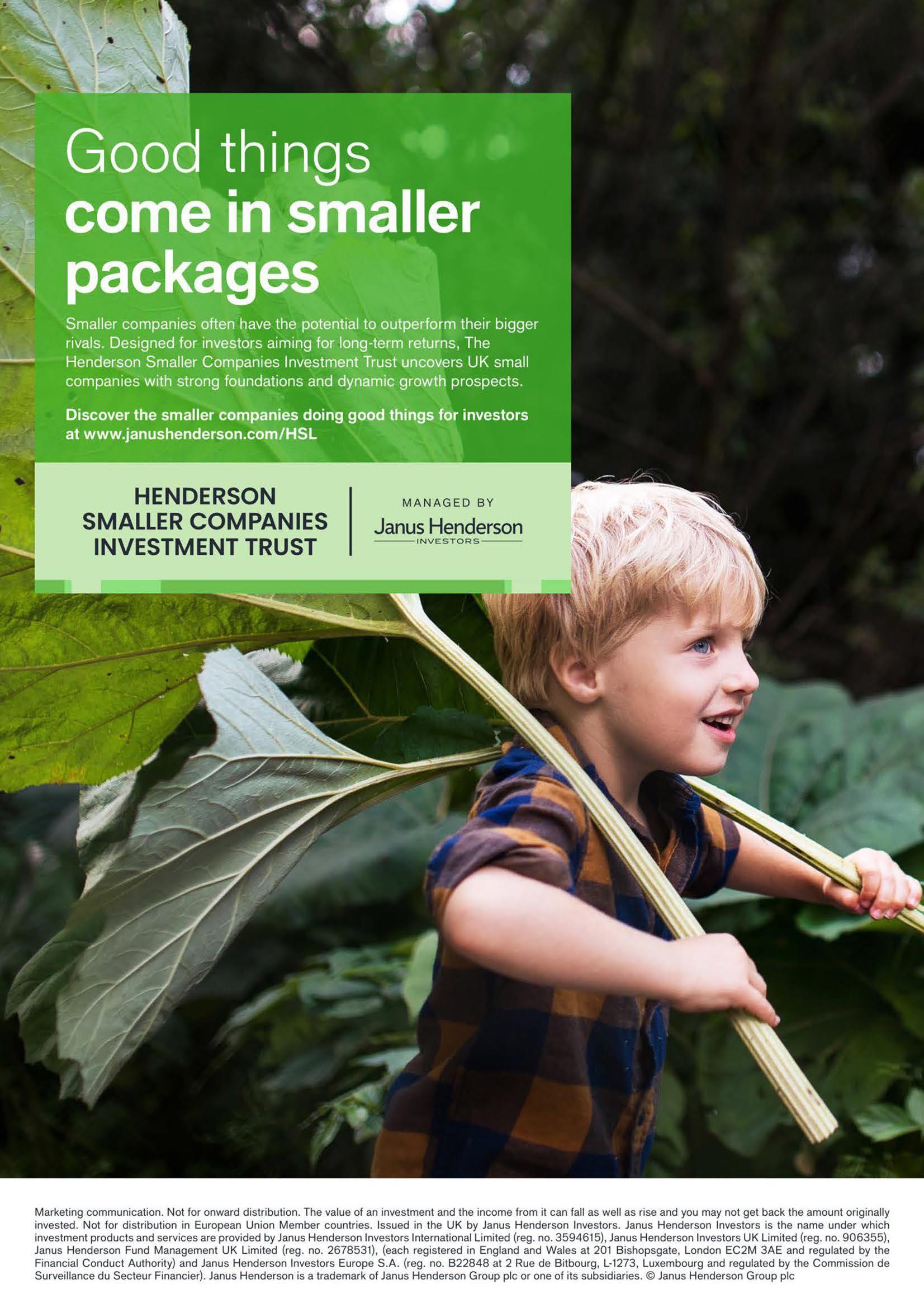

Investment returns tell you nothing about how much risk was taken in the process
One of the most important things in investing is risk management. Howard Marks, co-founder of high-yield bond firm Oaktree Capital Management, believes managing risk is the ultimate test of an investor’s skill.
In this feature we explore the nature of risk, which may surprise you, and reveal how professional money managers like Marks manage it.
It may be comforting to believe your fund manager is achieving returns based on pure skill, but Marks believes it is impossible to know for sure how much risk a manager has taken to deliver a particular return, even after the fact.
This is because risk is often hidden, and at the end of the day a manager may just have been lucky.
Boiling it down, risk is the possibility or the odds of incurring a loss. Risk can also be thought of as uncertainty about the future.
Marks does not believe risk can be quantified precisely. The best anyone can hope for is to make an accurate subjective judgment based on expert knowledge, but even then risk cannot be removed entirely.
Nor should anyone want to remove all risk because that too is risky. In other words, counterintuitive as it sounds, not taking enough risk is risky.
One other type of risk Marks believes is
important, and the ‘cardinal sin’ of investing, is being forced to sell at the bottom and missing the subsequent upside. This is disastrous risk management.
Risk is ignorance of what is going to happen. The problem is, more things can happen than we can ever imagine but only one thing will happen.
This blindness is the source of risk. Imagine you live on the San Andreas fault in California in a modern house with a design flaw. You could live many years in the house without suffering any negative consequences.
It is only when an earthquake happens that the design flaw comes to light, and the loss is experienced. It is when risk collides with negative events that investors suffer loss.
As you might guess, Marks is not a fan of assigning probabilities to things to calculate riskweighted scores because knowing the probability of something happening does not help pin down what will happen in the end.
Risk can be counterintuitive, and even perverse. When fewer people are worried about risk, that laid-back attitude makes an investment riskier, and the reverse is also true. When investors are very focused on risk, an investment becomes less risky as a result.
Attitudes matter. One study, based in a Dutch town, showed that removing road markings and
traffic lights actually led to fewer road accidents because drivers ‘perceived’ there was a greater risk and consequently drove more carefully.
If asked, most of us would say investing in highquality companies with strong growth prospects sounds like an obvious low-risk strategy.
However, in the late 1960s, long before the market’s current infatuation with the Magnificent Seven, US investors fell in love with another group of stocks which became known as the ‘Nifty Fifty’ ─ a collection of large-caps perceived to be the best and fastest-growing US firms.
Any investor who bought the Nifty Fifty in 1969 and steadfastly held onto them for the next five years would have incurred losses of more than 90%, incredible as it sounds.
The perceived high-quality nature of these companies, which included IBM (IBM:NYSE) and Coca-Cola (KO:NYSE), did nothing to protect investors from heavy losses. Quite simply, the prices investors were prepared to pay for these high-flying companies were too high and their valuations became unsustainable which made them riskier to own.
Studies have shown that riskier assets like stocks have delivered a higher return than bonds, and it is often assumed that this relationship is smooth.
Marks argues this assumption doesn’t help our understanding of the underlying nature of risk.
As investors move up the risk spectrum in search of higher returns, the range of possible outcomes expands, and the worst-case outcomes get more extreme, with potential for losses.
This is a much better way of thinking about the relationship between risk and return, says Marks.
As we have all experienced, from time to time things turn out differently to what we expect. It is how as investors we prepare for and deal with those eventualities which defines good risk management.
According to Marks, sound risk management is ‘the intelligent bearing of risk for profit’.
Good investors keep risk under control - superior investors assemble diversified portfolios with solid risk controls, allowing for the possibility of gain.
Imagine the stock market goes up 10% in the good times and falls 10% in the bad times. If investor A’s portfolio goes up 15% in the good times and down 15% in the bad times, there is no value being added, just excessive risk taking.
In other words, investor A captured 1.5 times the market’s upside return but also 1.5 times the downside. The net result is a 2.25% loss (1.15 x 0.85 – 1 x 100) compared with a market loss of 1%. (1.1 x 0.9 -1 x 100)
On the other hand, investor B’s portfolio goes up 10% and down 6%, matching the market gains when times are good but protecting against steep market losses in the bad times.
The net result is a 3.4% gain (1.1 x 0.94 -1 x 100) against a market loss of 1% which shows superior risk management and skill.
Marks believes it is ‘reasonable’ to match the market’s return when it goes up, which it does most of the time. The real value-add is providing an element of protection from losses on the way down.
The best permutation is a combination where an investor captures more of the upside and less of the downside, demonstrating strong risk management and true investment skill. This is a rare feat in the investment world.

By Martin Gamble Education Editor
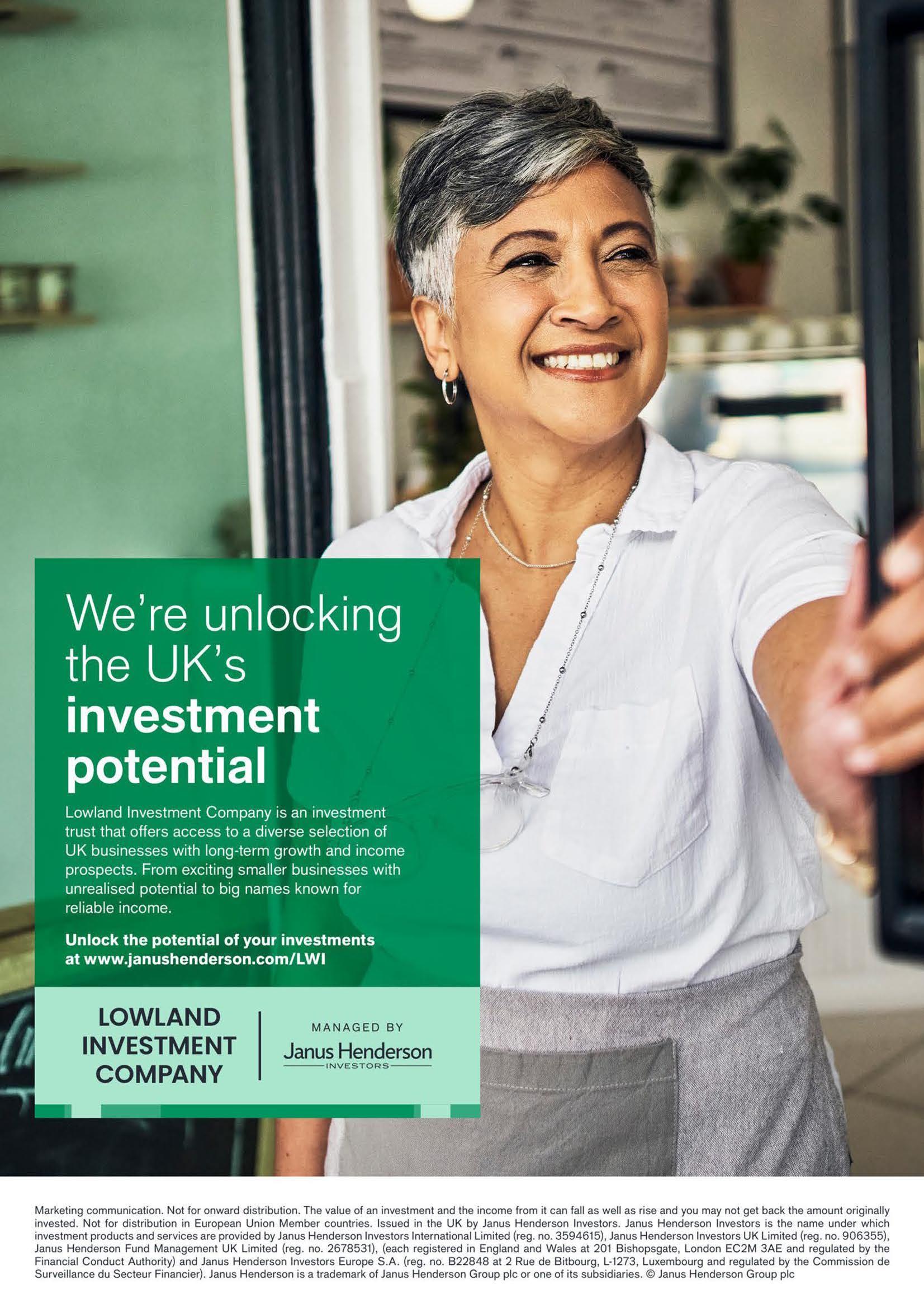
This retirement option might offer some security but at the expense of flexibility
Here’s a sentence you won’t read very often: the annuity market witnessed a significant boom in the last tax year.
Data from the FCA shows annuity sales rose by almost 40% in 2023/24, marking a sharp reversal in fortunes. Ever since pension freedoms were introduced in 2015, annuities have been shunned in favour of more flexible ways of drawing a pension.
But rising interest rates have led to a surge in popularity, though it must be said annuities still only account for 10% of pension withdrawals. Most people still prefer to keep their money invested in their pension via a drawdown plan, or simply take it as cash.
provider. The basic premise of an annuity is that if you hand over your pension pot, or part of it, to an insurance company, they will provide you with an annual income for life in return.
One of the big gripes savers have with this arrangement is if you die soon after buying an annuity, all your money is gone (unless you build in some protections which reduce your income). This is a fair criticism, but it’s easy to ignore the flip side of this risk: if you live to 100, or beyond, an annuity keeps paying out, year after year.
Before George Osborne waved his magic wand and did away with the rules governing pension withdrawals, 90% of retiring pension savers opted for an annuity. But they did so reluctantly, because other options were limited. There are plenty of reasons people don’t like annuities, but they might not appreciate the value they can add to a retirement strategy. For many years this was a moot point ─ because annuity rates were so low, annuities were deeply unattractive. Now rates have risen, they are worthy of consideration for those starting to take their pension income.
Many pension savers won’t have come across an annuity before they get close to retirement and get a pack explaining their choices from their pension
Whether you choose to buy an annuity or not will often come down to how much you value the security of your pension income. Investment income is variable and so doesn’t provide the
How buying power decreases over 20 years
certainty an annuity does. But by the same token, annuity income isn’t flexible so you can’t adjust the income you withdraw from your pension each year if you want to manage your tax liabilities, or simply have changeable income needs. This is quite normal in retirement when the early years might be filled with extra expenditure as you make the most of your free time.
The rate you get also matters, of course, and this will vary depending on a number of factors, but most relevant is the age at which you take out the annuity. A 65-year-old can currently get a level annuity income of around £7,200 per year on a £100,000 pension pot. That may sound appealing compared to a dividend yield of around 3.5% from the UK stock market, but remember that with an annuity, your capital is also effectively being paid back to you. By contrast you can take the income yield from the stock market while leaving your capital untouched, or indeed roll the dividends up for future growth.
It’s very important to take into account inflation risk with an annuity. An annual income of £7,200 might sound attractive now, but it will gradually lose its buying power. After 20 years of 2% inflation that £7,200 would effectively be worth just £4,800. It’s possible to buy an annuity which rises each year in line with inflation, but they start at a much lower
level. Currently this would be around £4,500 for a 65-year-old. This is a significant drop, but if you’re concerned about the security of your income, then protecting it from inflation will also likely be high on your list of priorities. There are other protections you can build into an annuity, such as a spouse’s pension, or a guaranteed payment period, but again these will reduce the starting value.
You may be able to get a boost to the annuity as a result of health or lifestyle conditions, such as diabetes, elevated cholesterol levels, or being a smoker. Of course, the higher income the insurance company is willing to pay in these circumstances is based on a higher statistical likelihood of an early death, so even here it’s worth considering the total value of all the payments that might be made.
Annuities are unlikely to recover their former glory, mainly because they look so inflexible compared to the other options now on offer. But retiring pension savers should at least consider the pros and cons. It’s also worth remembering you can take out an annuity with some of your pension while keeping the rest invested. This mix and match approach might help you hit the perfect blend of security, flexibility, and growth.

By Laith Khalaf AJ Bell Head of Investment Analysis


There is speculation the Government could raise CGT rates in the Budget on 30 October
The list of company directors selling more than £1 million worth of shares since Labour got into power three months ago is growing. It’s as if they can see the writing on the wall with a potential hike to capital gains tax in the Budget on 30 October. By crystalising value from their investments now they can avoid handing over more of their wealth to the taxman should we see substantial changes to the system.
Since the general election on 4 July, Next (NXT)
Company Director
Dunelm
William Adderley (deputy chair)
Globaldata Michael Danson (CEO)
Next Simon Wolfson (CEO)
Franchise Brands
Nigel Wray (nonexecutive director)
Berkeley Robert Perrins (CEO)
Wetherspoons Tim Martin (chair)
Craneware Keith Neilson (CEO)
AO John Roberts (CEO)
of sale
£114 million
£22.5 million
£29.2 million
£11.2 million
£10.5 million
£10 million
£9.3 million
£7 million
Table: Shares magazine • Source: AJ Bell, company announcements
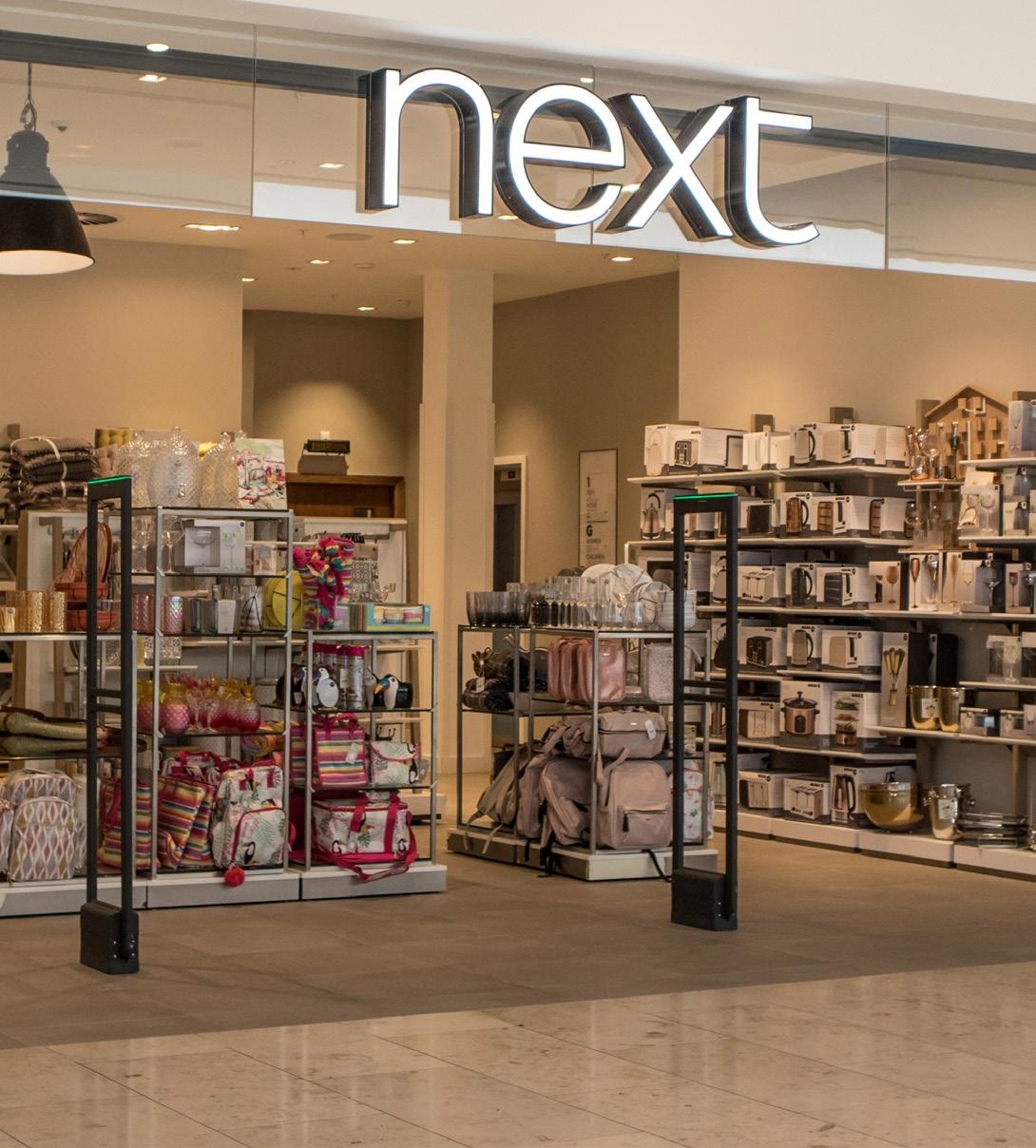
chief executive Simon Wolfson has disposed of £29 million worth of shares, Wetherspoon (JDW) founder and chair Tim Martin has cashed in £10 million of stock, and Robert Perrins who runs housebuilder Berkeley (BKG) has offloaded £10 million of equity in the business, among others.
While it is easy to suggest these disposals are purely down to tax planning and speculation around the content of the Budget, it’s a good reminder to always consider why a director is selling down their holding.
Over the years, director dealings have sent an important signal to the market. A chief executive, finance director or chief operating officer should know everything that’s going on in a business because they see the sales figures, monitor costs and see various key performance indicators. They will know if a company is achieving its objectives or not.
Non-executive directors’ share dealings are also worth following as they will attend board meetings

and have valuable insight into the opportunities and threats, even though they may not have granular detail of the day-to-day operations.
If a director is buying stock, it can suggest everything is going well with the business and they see value at the current price.
Likewise, directors selling shares can also send a signal to the market about the potential prospects for a company. If the boss is cutting their holding, does that imply things aren’t going well? It can certainly look that way.
It is important to stress that director share buying and selling isn’t necessarily something to copy wholesale”
A significant share sale can indicate something is amiss, with a downswing in both the company’s fortunes and the share price potentially on the cards. Alternatively, the director might feel the market has overvalued the company and the shares might be heading for a fall.
There can be a perfectly logical reason for a share disposal which has no reflection on the state of the business. For example, a director might be raising cash to buy a house or to fund a divorce settlement. Deliveroo (ROO) said in September chief executive Will Shu had sold £14.8 million worth of stock ‘to cover personal property investments’.
You often see directors sell shares when they’ve received them as part of a bonus payment, where they are selling to raise enough money to pay the associated tax bill. Unfortunately for investors, most companies do not reveal the reasons behind director share purchases or sales. At best, you might occasionally get a comment about selling to meet demand for stock from institutional investors or for estate planning purposes – you’ll never get a comment that a director is worried about the outlook as such actions could spark widespread selling on the market. Each investor needs to dig deeply into a company’s most recent trading updates and results
to spot any worrying signs. It is important to stress director share buying and selling isn’t necessarily something to copy wholesale. Instead, you should consider their actions as part of deeper research into a business.
Directors can only buy or sell at certain times of the year. They cannot deal in a closed period which is when financial accounts are being prepared. They also cannot buy or sell if there is undisclosed inside information, such as news of a possible takeover or a major contract win or loss.
A director buying stock after a big rally in the share price, or investing in the shares after joining the board, sends a strong signal to the market that person is confident about a company’s prospects. Equally someone selling after a slump in the share price doesn’t show faith in a company’s position, although these situations are not always black and white.

Certain directors buy stock for a perfectly logical reason. For example, a new chief executive of a FTSE 100 company often has a clause in their employment contract which says they must buy a certain value of shares to align their interests with shareholders.
THE INFORMATION Companies must report directors’ buys and sells to the stock market so it is easy to find out who is doing what, even if the rationale behind the trade remains private. Investors should scrutinise the daily stock market announcements headed ‘Director/PDMR Shareholding’, then scroll down to the ‘Nature of the transaction’ heading. Here you will find out whether the shares bought or sold were via dealings in the open market or relate to the exercise of share options.
The significance of share deals in relation to the number of shares held by a director is always

Daniel Coatsworth: Insider selling
relevant. For example, a purchase of 20,000 shares by a chairperson who owns more than a million shares may not be that important. However, the finance director doubling their holding of 20,000 shares is a different matter. In an equivalent way, the sales director selling 20,000 shares out of a holding of 25,000 would not be a good sign.

It’s important to be alert to whether directors are buying shares just to give the impression everything is fine when it might not be. Sometimes when companies are known to be in trouble, a cluster of directors buy shares to try to
Sometimes when companies are known to be in trouble, a cluster of directors buy shares to try to reassure the market that all is well”
reassure the market all is well.
WE MIGHT NOT HAVE SEEN THE END OF SELLING
As for the latest flurry of share sales in excess of £1 million, it is logical directors would try to get ahead of potentially substantial changes to capital gains tax rules by crystalising gains in their shareholdings, and these transactions might not be a signal for investors to worry.
The wave of selling could continue for another five months. Should the Chancellor confirm the speculated changes, we might not see the new rules come into force until 6 April 2025 when the new tax year begins. That could lead to more selling by directors in the market to beat the deadline which could see shares in certain companies temporarily depressed, creating a potential buying opportunity for other investors who are confident in the long-term prospects.
featuring AJ Bell Editor-in-Chie and Shares’ contributor
Dan Coatsworth
Big incentives to switch bank accounts, why a sell-off in government bonds have troubled markets, and should you pay for social media networks?


Marcus Phayre-Mudge, fund manager, TR Property Investment Trust and CT Property Growth & Income
As a leveraged asset class, real estate enjoys a tailwind when interest rates begin to fall. So, with the Bank of England cutting rates in August for the first time since the pandemic, what should investors consider when reassessing the merits of property in their portfolios?
Rates down, real estate up?
Analysis of the last four market cycles suggests there is scope for property equities to outperform the wider market, as borrowing costs tick downwards. The chart shows this potential, with real estate equities outperforming broader equities by an average of 8% in the 12 months following the last rate rise.
Well positioned, even if rates remain elevated
It is unlikely rates will return to their post GFC lows. But what if we witness a resurgence of inflationary pressure – would this place property business models under strain? Within our portfolios we are selective about the businesses we invest in: quality companies operating in sectors and locations with supportive supply/demand dynamics. Management teams are crucial – the right expertise, approach, and alignment of interest are all
vital components. Our listed property exposure has relatively low loan to value ratios and longer-term debt arrangements, meaning their immediate prospects are not dependent on the broader direction of rates. Near term, ongoing discounts between share prices and underlying asset values offer scope for good returns. Longer-term, it is income streams that will be the key driver and seeking out pockets of potential rental growth is our primary focus. In many key markets we see little oversupply, and where supply of new space is limited, and tenant demand is stable, strong incumbent firms look well placed. We see a positive outlook for sectors including logistics, data centres, hotels, prime retail in cities with high tourist footfall, and even prime office markets in key central business district (CBD) areas such as London’s West End and core central Paris.
are we targeting relative value?
Both the hybrid CT Property Growth & Income Fund, launched in 2005, and TR Property Investment Trust, which has been a specialist real estate vehicle since 1982, counter the challenges faced when seeking to offer more liquid access to commercial property. In our view, this is a timely juncture for upping weightings to real estate. But as active investors we would always argue against doing so through a broad-brush allocation – not all real estate is created equal, so selectivity is key.

Risk disclaimer This financial promotion is issued for marketing and information purposes only by Columbia Threadneedle Investments in the UK. The information provided in the marketing material does not constitute, and should not be construed as, investment advice or a recommendation to buy, sell or otherwise transact in the Funds. This financial promotion is approved for marketing and information purposes by Columbia Threadneedle Management Limited 02/10/2024. Columbia Threadneedle Management Limited is authorised and regulated by the Financial Conduct Authority.

If I dip into my SIPP then return to work what would be my tax-free allowance?
There are different tax rules regarding drawdowns and lump sums
I am 59 and have recently taken time off work to provide care and support to my parents. I am a little undecided as to whether I will return to work or call it quits and retire.
As such, I would like to take lump sums from my SIPP once a year.
So, I have two questions:
1. Should I return to work, will any contributions to a new workplace pension and/or a new SIPP still enjoy full tax relief up to £60,000, assuming I take the maximum amount from my SIPP which does not incur tax each year?
2. What are the differences and benefits between putting a SIPP into drawdown versus taking uncrystallised lump sums once a year?
Andrew

Rachel Vahey, AJ Bell Head of Public Policy, says:
Life is not straightforward. One of the advantages of saving in a SIPP is the flexibility it gives you to take your money out of your pension in a way and at a time that suits you.
If you are 55 or over (rising to 57 from April 2028), you can access the money in your SIPP. You don’t have to take it all at once; if you want you can access a bit at a time.
You then have a range of options about how you can take the pension pot.

free-cash and move the remainder to drawdown. You can then take an income from the drawdown pot, either regularly or on an ad-hoc basis.
You
can take your tax-free cash, which is usually 25% of the pension pot, and use the remainder to buy an annuity”
You can take your tax-free cash, which is usually 25% of the pension pot, and use the remainder to buy an annuity, which is a guaranteed income for life.
If you want more flexibility, you can take your tax
This initially gives you a big amount of money in your bank account, so you should plan what to do with it. You could spend some, but if you have no immediate use for it you can save it. That could be within an ISA, but depending on the size of the lump sum it may take more than one year to move the unused money over to your ISA, using up your yearly limit of £20,000.
While you spend only your tax-free cash, you can leave the remainder of the pension pot in drawdown and if it remains untouched you can keep your £60,000 annual allowance.

(Remember your annual allowance covers your contributions, your employer’s contributions, and any tax relief. In addition, how much tax relief you receive on your personal contributions into a pension is limited to 100% of your earnings.)
However, when you start to take an income from your drawdown, which will be taxed as earnings, then the £60,000 annual allowance falls to the money purchase annual allowance (MPAA) of £10,000.
You don’t have to take all your tax-free cash at once though. You could take a smaller portion and leave the rest invested in your pension where it can grow in a tax advantageous environment.
This can be done through drip-feeding into drawdown, or you could take an ad-hoc lump sum (sometimes called an uncrystallised funds pension lump sum or UFPLS). Usually, 25% of it will be tax free and the rest will be taxed as earnings.
The advantage to this latter route is you are leaving more money untouched in the pension where it can continue to benefit from taxadvantageous investment growth and may allow you to take more tax-free cash. The downside is it may immediately trigger the MPAA of £10,000,

which may affect your ability in the future to pay higher contributions.
Maybe an example will help explain your options.
David has £200,000 in his pension pot. He needs an income of £10,000 a year. He has no other income.
He could take his whole tax-free cash of £50,000 and move the remainder into drawdown. He can use his tax-free cash to give him an income of £10,000 a year for five years. He can then start to withdraw an income from his drawdown. David gets to keep his higher annual allowance until he starts to dip into his drawdown money. But he will have to find somewhere he can shelter his money until he needs it.
Alternatively, David could take an ad-hoc lump sum of £10,000 each year. Because this is David’s only income, not only is 25% (£2,500) tax free, the £7,500 lump sum is also below the personal allowance of £12,570. But this will trigger the MPAA of £10,000.
A third option is to take £40,000 a year from the pension pot, take £10,000 as tax-free cash and move the rest into drawdown, repeating this over five years.
This again means only taking money out of the pension pot when David needs it, and as David can survive on his yearly £10,000 tax-free lump sums without touching the money in the drawdown pot this means he gets to keep his higher annual allowance.
Of course, the final decision would depend completely on your own personal circumstances –how much money you need as a yearly lump sum, what other income you have, and the size of your pension pot.
Send an email to askrachel@ajbell.co.uk with the words ‘Retirement question’ in the subject line. We’ll do our best to respond in a future edition of Shares Please note, we only provide information and we do not provide financial advice. If you’re unsure please consult a suitably qualified financial adviser. We cannot comment on individual investment portfolios.





EDITOR: Tom Sieber @SharesMagTom








DEPUTY EDITOR: Ian Conway @SharesMagIan
NEWS EDITOR: Steven Frazer @SharesMagSteve
FUNDS AND INVESTMENT
TRUSTS EDITOR: James Crux @SharesMagJames
EDUCATION EDITOR: Martin Gamble @Chilligg
INVESTMENT WRITER: Sabuhi Gard @sharesmagsabuhi
CONTRIBUTORS: Dan Coatsworth
Danni Hewson
Laith Khalaf
Laura Suter
Rachel Vahey
Russ Mould
Shares magazine is published weekly every Thursday (50 times per year) by AJ Bell Media Limited, 49 Southwark Bridge Road, London, SE1 9HH. Company Registration No: 3733852.
All Shares material is copyright. Reproduction in whole or part is not permitted without written permission from the editor.
Shares publishes information and ideas which are of interest to investors. It does not provide advice in relation to investments or any other financial matters. Comments published in Shares must not be relied upon by readers when they make their investment decisions. Investors who require advice should consult a properly qualified independent adviser. Shares, its staff and AJ Bell Media Limited do not, under any circumstances, accept liability for losses suffered by readers as a result of their investment decisions.
Members of staff of Shares may hold shares in companies mentioned in the magazine. This could create a conflict of interests. Where such a conflict exists it will be disclosed. Shares adheres to a strict code of conduct for reporters, as set out below.
1. In keeping with the existing practice, reporters who intend to write about any securities, derivatives or positions with spread betting organisations that they have an interest in should first clear their writing with the editor. If the editor agrees that the
reporter can write about the interest, it should be disclosed to readers at the end of the story. Holdings by third parties including families, trusts, selfselect pension funds, self select ISAs and PEPs and nominee accounts are included in such interests.
2. Reporters will inform the editor on any occasion that they transact shares, derivatives or spread betting positions. This will overcome situations when the interests they are considering might conflict with reports by other writers in the magazine. This notification should be confirmed by e-mail.
3. Reporters are required to hold a full personal interest register. The whereabouts of this register should be revealed to the editor.
4. A reporter should not have made a transaction of shares, derivatives or spread betting positions for 30 days before the publication of an article that mentions such interest. Reporters who have an interest in a company they have written about should not transact the shares within 30 days after the on-sale date of the magazine.

ANEXO GROUP (ANX)
During the event and afterwards over drinks, investors will have the chance to:
• Discover new investment opportunities
• Get to know the companies better
• Talk with the company directors and other investors


A specialist integrated credit hire and legal services group focused on providing replacement vehicles and associated legal services to customers who have been involved in a non-fault accident.
ENSILICA (ENSI)
A leading fabless chipmaker focused on custom ASIC for OEMs and system houses, as well as IC design services for companies with their own design teams. EnSilica has world-class expertise in supplying custom RF, mmWave, mixed signal and digital ASICs to its international customers in the automotive, industrial, healthcare and communications markets.

A natural resources company is being admitted to AIM following the acquisition of Rome Resources Limited in a reverse takeover. Rome Resources holds tin assets in the DRCongo with encouraging initial drilling results, situated only 8km from the highest grade tin mine in the world.